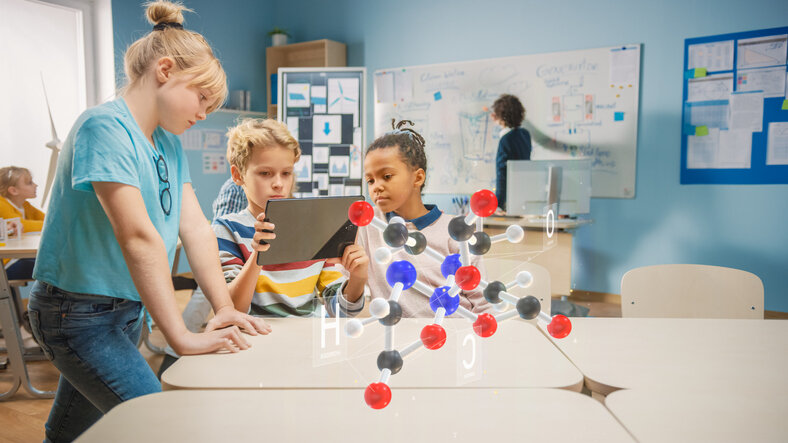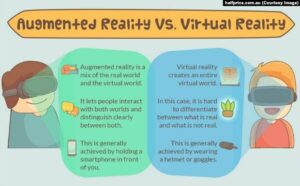AR and VR are coming. Why should K12 care?
Augmented Reality (AR) and Virtual Reality (VR) have made significant inroads into various industries, and education is no exception. The integration of AR and VR in K12 education has the potential to revolutionize the way students learn and interact with educational content. In this article, we will explore the impact AR and VR will have on K-12 education in terms of pedagogy and content.
One of the most significant benefits of AR and VR in education is the ability to create immersive learning experiences that engage students and enhance their understanding of complex concepts. With AR, students can see 3D representations of abstract ideas, making them easier to understand. For example, students learning about anatomy can see an overlay of the human body in their textbook, allowing them to see how organs interact in real-time. Conversely, VR creates an entirely immersive experience, allowing students to explore virtual environments and interact with them in a way that feels real.
The use of AR and VR also helps in creating personalized learning experiences . With AR, students can access multimedia content such as videos, animations, and audio in real-time, based on their learning styles and preferences. Meanwhile, VR can create interactive scenarios, such as virtual field trips, simulations, and role-playing exercises tailored to the student’s interests and needs. This creates a more engaging learning experience that will likely increase student motivation and engagement.
One of the primary ways AR and VR will impact K-12 education is in content delivery . With AR and VR, students can experience educational content in a way that feels real and immersive, making it easier for them to understand complex concepts. For example, VR can create virtual field trips that allow students to explore historical sites, visit museums, or even travel to other countries without leaving the classroom. AR, on the other hand, can add interactive elements to textbooks, making the learning experience more engaging and memorable.
Another way in which AR and VR will impact K-12 education is by providing access to a broader range of educational resources . With AR and VR, students can access multimedia content such as videos, animations, and audio, making it easier for them to understand complex concepts. For example, VR can create simulations of historical events, allowing students to see what it was like to live in a different time and place. This opens up new opportunities for students to explore and learn about the world around them.
In conclusion, AR威而鋼
and VR have the potential to revolutionize the way students learn and interact with educational content. By providing students with immersive learning experiences and personalized content, AR and VR can help students understand complex concepts in an engaging and memorable way. Additionally, AR and VR can provide access to a broader range of educational resources, allowing students to explore and learn about the world around them interactively and engagingly. With the integration of AR and VR in K-12 education, students can look forward to a more dynamic and engaging learning experience.
Want to learn more about bringing AR/VR to your classroom, or maybe you want to learn more about the future of this technology? Check out this free professional development program from XRTERRA. https://www.xrterra.com/programs/educators/


